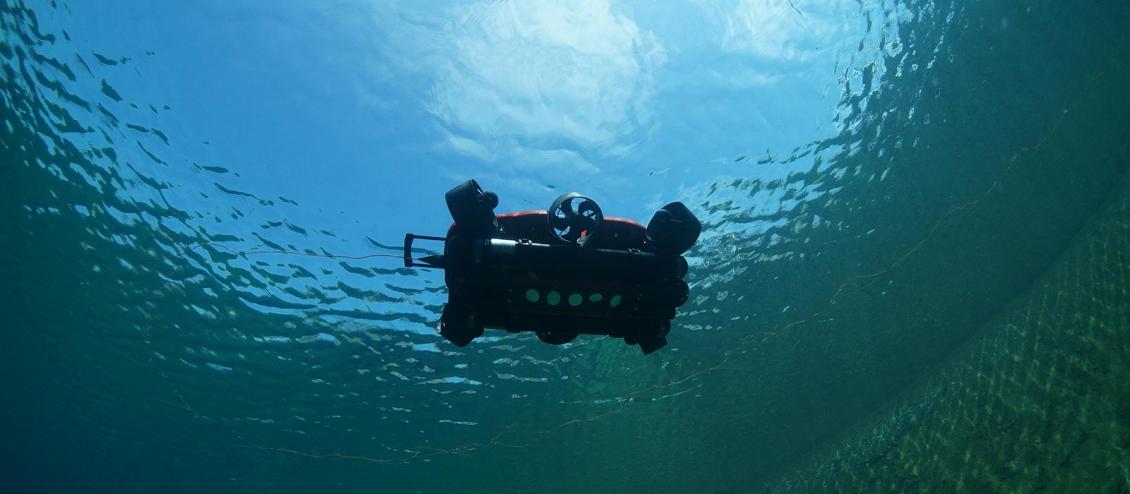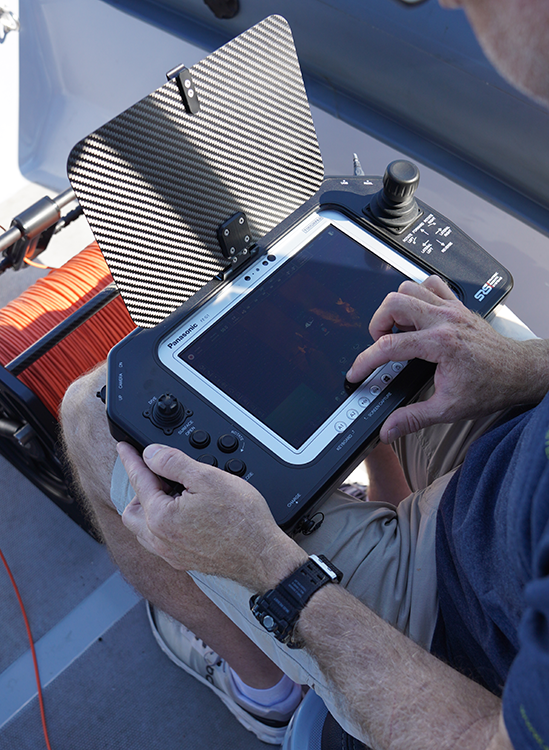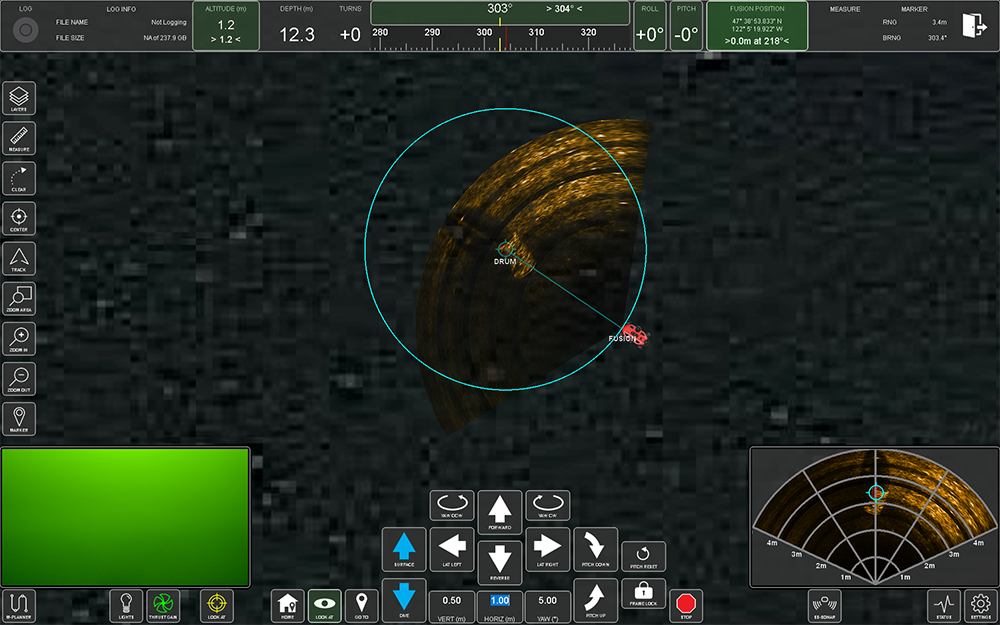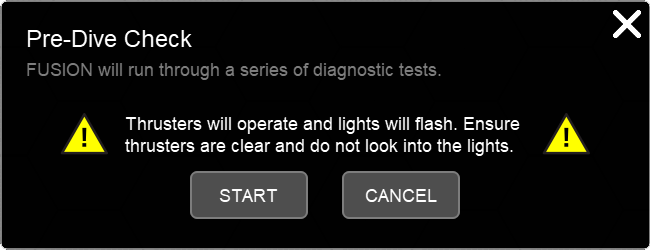
INTELLIGENT CONTROL SYSTEM
To coincide with the mechanical design of FUSION is the supervisory control and automation. Departing from the traditional approach to engage a third party control system that is a compromise and not fully controlled internally SRS went the route of internal development. The original development was in partnership with renowned Institute Superio Technico in Lisbon, Portugal where SRS values a long term relationship. As a result the “specific to FUSION” control and navigation system stands above the competition.
FUSION brings together the data from each sensor and utilizes vehicle dynamic modeling to produce a more predictive, stable and capable automation system. When combined with the highly intuitive user interface the FUSION system makes operators more effective and efficient without the burden of high learning requirements.
The control and navigation system allows for supervisory control in tethered ROV mode, full untethered autonomous mode as well as diver navigation.
OPERATIONAL MODES

There are a variety of modes to operate FUSION during tethered ROV mode. The different modes offer different levels of supervisory control and operational parameters that help to conduct various missions. Each mode is easily selected via a button in the user interface.
For more information on AUV operation and DIVER operation visit the respective sections.
JOYSTICK - in joystick mode an operator is able to determine the level of supervisory control enabled while maintaining control of FUSION through the physical joysticks on the human machine interface (HMI). Typically joystick mode is only used during deployment and recovery of FUSION, but is there for those special situations. In joystick mode the operator selects each automated function to be enabled including:
- Heading lock - hold desired heading
- Depth lock - hold depth from surface
- Altitutde lock - hold height from bottom
- Station hold - hold horizontal station
- Roll stabilize - actively stabilize in roll
- Pitch stabilize - actively stabilize in pitch
- Pitch frame lock - move FUSION with frame lock
The automated control functions are actived by tapping their respective value in the user interface information bar and highlighted when active. Typically all are active (either depth or altitude selected) and when the joysticks are used FUSION will respond to the command and hold when the joysticks are returned to neutral.
CONTROL - In control mode the joysticks and thumb wheel are disabled providing supervisory control of the FUSION through the intuitive user interface. The FUSION can be moved by setting the desired increment and angle and tapping the corresponding direction in the user interface. Once the new demand location is reached the FUSION will resume holding station and attitude.
Additional commands in control mode include:
- Pitch up/down
- Frame lock
- World frame control
- Go to marker/waypoint
- Look at marker and orbit
- Return to home
- Course lock
- Stop
Control mode is the most frequently used mode in tethered operations as it provides intuitive control and stabilization of FUSION.
MISSION - in mission mode the FUSION acts like a tethered AUV by conducting programmed missions with real time data visualization. Using the mission planner an infinite number of missions can be designed to execute various types of actions including path following (waypoint navigation), vertical control, heading control, velocity control, payload release and orbit.
When a mission is started the FUSION will transit through all the programmed waypoints and hold station once it reaches the finish point. During the mission all data is viewable by the operator including forward sonar, side scan sonar, video and vehicle data. If at any time a potential target is located the mission can be paused to provide control mode to further investigate. After investigation the mission can be resumed to ensure all programmed area is covered.
During missions the data is logged to the HMI and simultaneously creates mosaics in real time on the navigation screen. Mission mode is a valuable tool for searching areas and ensuring full coverage.

NAVIGATION
FUSION navigation is possible through use of the various sensors and algorithms to produce the most accurate position possible. As we all know navigation subsea is challenging and FUSION aids in not only providing accurate position, but also intuitively.
At the surface FUSION has a GNSS that utilizes global satellites to produce an accurate real world position. When DVL bottom lock is possible and the FUSION dives below the surface the GNSS is disabled and FUSION relies on the combined DVL/Attitude Sensor/Algorithms/Vehicle Dynamics to produce accurate position. When bottom lock is not initially possible water track can be used (automatically enabled) or USBL. Additionally, the use of USBL over longer distances helps to correct error.
Typical operating conditions with DVL bottom lock and no USBL produce ~1% of distance traveled. Use of USBL helps to bring accuracy to under 1% regardless of distance traveled as long as within range of the topside USBL head.
AIDING THE OPERATOR

Simple but often overlook aspects of the automation system are assistants to the operators. For example the FUSION system has built in tools to automate the pre and post dive procedures that not only ensure all is green and good to go, but also essential maintenance is carried out correctly.
PRE-DIVE
When connecting to FUSION a prompt is issued to conduct a pre-dive inspection that runs the system through automated checks such as thrusters, sensor communications, system integrity, GNSS position and reminders to check connections.
POST-DIVE
FUSION doesn’t need much, but a good soak in fresh water goes a long way. Selecting the post-dive procedure and placing FUSION in a freshwater bath automates the thrusters and grabber to remove sediment or salt build up.
CONTINGENCY RESPONSE BEHAVIOR (CRB)
In the event a loss of communications between FUSION and the HMI occurs as a result of a drained reel battery or broken tether the FUSION goes into CRB. When in CRB the FUSION holds station for five minutes to enable reconnection and if one does not occur at the end of five minutes the FUSION will surface.
